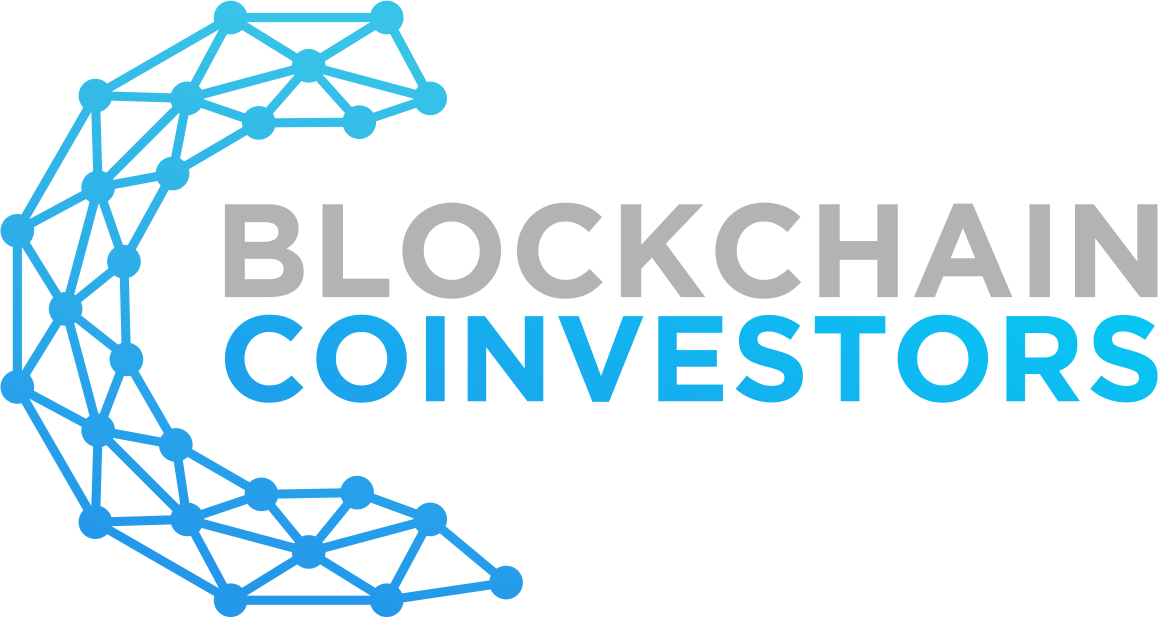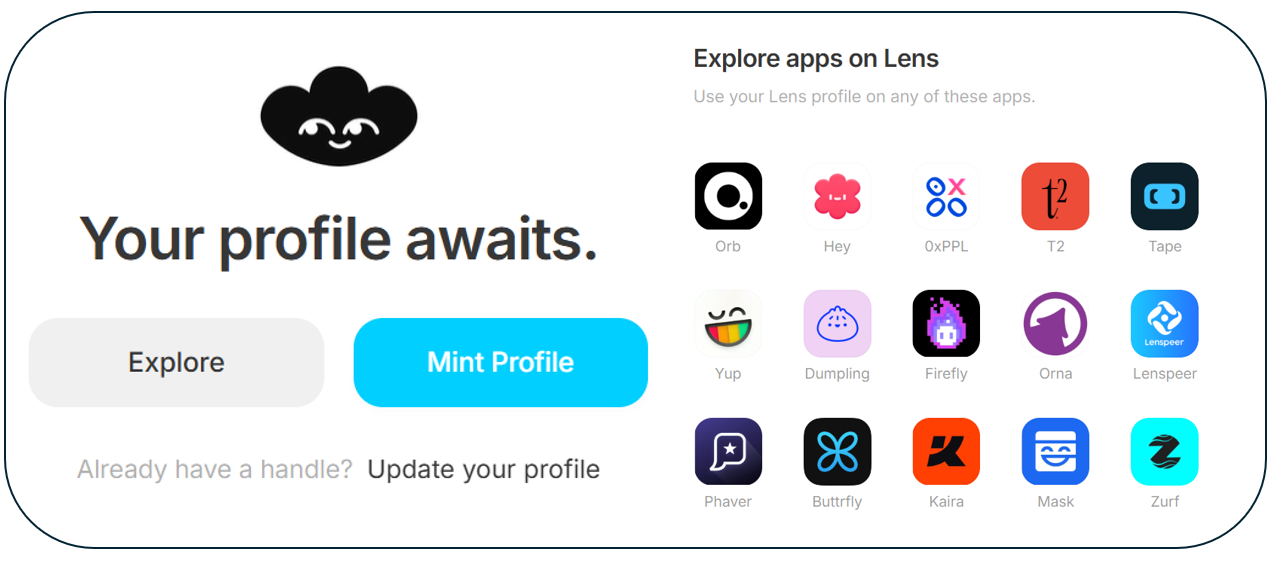Lens Protocol: Bringing the Power of Social Back to the People
Lens Protocol: Bringing the Power of Social Back to the People
This week we discuss new portfolio company Lens Protocol – and the growing demand for a social platform which realigns users, the platform and the community to finally deliver on the digital town square that’s been promised to the world since the late 90s.
Social is Begging for Web3
Despite boasting billions of users worldwide and billions in revenue, our existing social media platforms have a few structural limitations which create a misalignment of incentives for users vs platforms and result in a less-than-optimal user experience – more resembling digital fiefdoms than town squares, as was originally promised.
First and foremost, the platforms are incentivized to maximize attention and eyeballs. (Think Instagram reels and TikTok). Rather than providing users what they want, the platform is incentivized to provide only whatever will keep them there – be it high or low quality content. Platforms are not incentivized to protect users, creators or builders – only to keep them.
Ownership and control of the platforms, including decisions about censorship, for example, also rest in the hands of a few powerful individuals and companies – all with their own political views and intentions. (Think Facebook’s previous election manipulation and Twitter censorship). The user experience has become fragmented, with users often holding multiple social accounts across myriad disconnected platforms - without a centralized hub, without portable reputation and identity mechanisms, and often without proper credit and attribution cross-platform for creators.
All of which is fueling a rabid attention economy which looks more like techno-feudalism than social media – with a handful of powerful fiefs driving and shaping the conversation behind the scenes. This was, in large part, a driving reason behind Elon Musk’s acquisition of Twitter which was becoming a classic example of a once open platform now mired in controversy and censorship. And despite Herculean efforts (and a heck of a lot of capital), it isn’t yet clear that he’ll be able to resurrect Twitter (now ‘X’) to the democratic, open-access digital town square it was originally meant to be.
Meet Lens - The Web3 Social Platform
We believe Lens Protocol, however, can be the infrastructure behind the digital town square which truly aligns the platform, the users, and the community once again. Which is why we were excited to invest in their oversubscribed Series A round earlier this year led by Faction, adding us to their cap table alongside venture heavyweights and world class angels including Uniswap CEO Hayden Adams, OpenSea co-founder Alex Atallah, serial entrepreneur Balaji Srinivasan, Sandbox co-founder Sébastien Borget, and Polygon co-founder Sandeep Nailwal.
Lens Protocol is a decentralized, open-source social graph protocol built on the Polygon blockchain designed to fix the way users interact and create content on social media platforms by shifting control of user data, content, and interactions from centralized entities back to the users themselves. In essence, a new web3 powered social media platform designed to rival the likes of Facebook and X by giving the ownership and control to users for the first time ever.
A New Vision for Social
The protocol was conceived by Stani Kulechov, the founder of Aave, who saw an opportunity to disrupt the traditional, centralized social media model by leveraging blockchain technology to empower users and the project was formally launched in early 2022.
Unlike its behemoth predecessor web2 platforms, Lens has two simple core goals which dramatically change the dynamic between user and platform. First and foremost, accessibility – to be open and accessible for all, anywhere, anytime, period. And second, control – to give users control over their identity, content and connections.
In practice, Lens Protocol allows developers to build Web3-native social applications where users maintain ownership of their profiles, connections, and content through the use of NFTs (Non-Fungible Tokens) and other decentralized technologies. By decentralizing the social media landscape, Lens aims to address the current issues of content ownership, censorship, access, and platform dependency – providing the foundational infrastructure for the digital town squares of tomorrow.
Packed with New Web3-Enabled Tools
To really get a sense of Lens Protocol’s grand vision for decentralized social media (or DeSo), we recommend heading over www.lens.xyz and simply creating a profile. But in the meantime, these are some of the areas that set Lens apart from predecessors and competitors as critical infrastructure for the future of social media:
User-Owned Profiles: Lens Protocol allows users to own their social media profiles via NFTs, ensuring that they retain control over their identity, content, and relationships across various decentralized applications (‘dApps’ or ‘Dapps’) built on the protocol.
Content Monetization: Creators can easily monetize their content by minting posts as NFTs, allowing users to directly support their favorite creators. Lens also introduces novel monetization mechanisms, including pay-to-follow models, tipping, and revenue-sharing on secondary sales of content NFTs.
Interoperability Across Platforms: Lens Protocol serves as the foundational layer for developers to create interoperable decentralized social media applications. This means a user’s social graph—comprising their connections, followers, and content—is portable across multiple platforms built on Lens. Users are not confined to a single platform or application, avoiding lock-in and censorship.
Modular Ecosystem: Lens is a composable, modular protocol, allowing developers to create social media applications with ease. It provides tools for building dApps that allow users to engage in content creation, curation, and communication, while leveraging Lens's underlying social graph.
Enhanced User Privacy and Control: As a decentralized protocol, Lens ensures that users maintain control over their data, deciding how and where it is used. This model stands in stark contrast to traditional social media platforms, where user data is often monetized without their explicit consent.
Developer-Friendly Framework: Lens Protocol provides an API and toolset that make it easier for developers to build decentralized social applications. This approach is intended to accelerate the creation of a wide variety of social media applications, ranging from niche communities to large-scale networks.
Built and Backed by Industry Heavyweights
Alongside their cutting-edge technology, Lens was created by the founding team behind industry-leading lending protocol Aave – which boasts over $20bn in net deposits, nearly $200bn in monthly volume and more than 50% market share of the entire decentralized finance (or defi) sector as of September. Led by visionary founder Stani Kulechov, Aave has a proven track record of delivering innovative, scalable, and secure decentralized solutions. As he now turns his attention towards fixing the broken promises of social media, Lens benefits from both the intellectual capital and the extensive network of Aave – a mainstay in the crypto space.
Their cap table is no less impressive, including some of the world’s most prominent venture investors spanning web2 and web3 like General Catalyst, Variant, Faction, and Blockchain Capital. Crypto natives and industry thought leaders are also coalescing around Lens, including the founders and CEOs of some of web3’s hottest projects like Uniswap (~$4bn TVL, >$40bn monthly volume), Opensea ($1bn+ valuation), Sandbox (5m+ registered wallets), and Polygon ($3.7bn FDV).
Additionally, by leveraging Polygon, a highly efficient Layer 2 scaling solution for Ethereum, Lens gains access to low-cost, high-speed infrastructure capable of supporting mainstream adoption. The combination of Aave’s pioneering leadership in DeFi, a robust developer community, deep industry support and the technical prowess of Polygon’s network places Lens Protocol in a unique position to redefine the future of social media in the web3 era.
Creating a Better User-Platform Alignment
Unlike its predecessors, Lens Protocol itself does not monetize directly but acts as the foundational infrastructure for the decentralized social platforms of tomorrow. Meaning unlike its predecessors, Lens is not incentivized to maximize attention and eyeballs, at the cost of users, but rather to simply provide the most equitable, accessible, feature-rich platform. Developers and creators building social applications on Lens then have the flexibility to create their own monetization strategies, taking advantage of a wide range of capabilities, including:
Subscription Models: Users can pay to follow profiles or access exclusive content.
Content NFTs: Posts can be minted as NFTs, allowing for direct creator-fan engagement and providing creators with secondary sales royalties.
Platform Fees: dApp developers can charge fees on interactions or transactions, such as tips, content purchases, or NFT trades.
By enabling multiple monetization streams for developers and creators, including novel features like tipping and pay-to-follow, Lens positions itself as a critical infrastructure for the emerging decentralized social economy. In this way, Lens also moves toward mending the broken user-platform relationship by realigning the platform’s incentives with the users.
A New Hope for Tomorrow
Lens Protocol represents a groundbreaking approach to decentralizing social media, offering users and developers a novel framework for content ownership, monetization, and interaction. Its modular architecture, combined with Aave’s reputation and the scalability of Polygon, positions Lens as a potential breakout leader in the Web3 social space.
Looking ahead, we believe Lens Protocol has the potential to disrupt the existing social media landscape and unlock new opportunities for decentralized content creation and community engagement - while mending the broken user-platform relationship.
Author
Christopher Nelson
Head of Digital Asset Research





